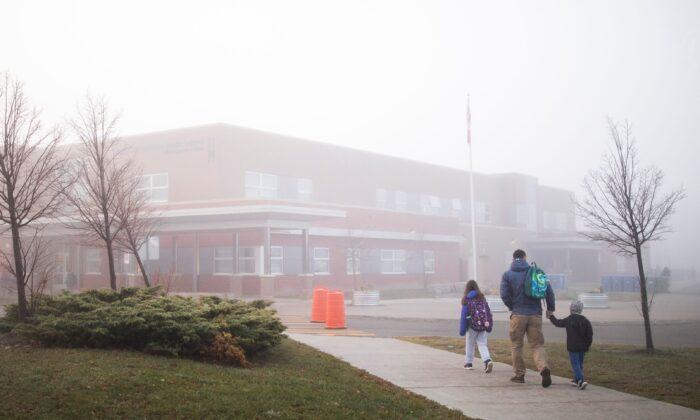Students are heading back to school in a few short weeks. Most provinces have already announced their reopening plans.
While there are some variations, provincial reopening plans are more similar than different. For example, every province is bringing back K-8 students on a full-time basis while most grade 9-12 students will start out with a hybrid education where they attend in-person on some days and stay home on other days.
In addition, all provinces are putting physical distancing requirements and other health protocols in place. Desks spaced further apart, fewer kids on buses, staggered lunch hours and recess breaks, and direction arrows in hallways are but a few of the changes that will make schools look different this fall.
There is one other thing provincial school reopening plans have in common. They are all under constant attack from teachers’ unions and organized parent groups.
For example, the British Columbia Teachers’ Federation (BCTF) claims that B.C.’s reopening plan isn’t safe enough. Among other things, it wants smaller classes, mandatory masks for all students ages 10 and up, and a remote learning option for any student from a family that wants it. Interestingly, BCTF had, until this point, been a strong supporter of B.C.’s NDP government. Now, they are at loggerheads.
Things are no better in Alberta, where the Alberta Teachers’ Association (ATA) has strongly denounced the provincial government’s reopening plan. Its demands are similar to those of BCTF—particularly the request for smaller classes.
As for Canada’s largest province, the Ontario teachers’ unions and other organized lobby groups are up in arms. Using the hashtag #safeseptember, they have launched a concerted social media campaign to spread the message that students and teachers won’t be safe under the current reopening plan.
And the Ontario government is feeling the pressure. In response to the teachers’ concerns, the government has allowed school boards to access more than $500 million in reserve funds for COVID-19 measures, announced mandatory masks for most students and teachers, committed to improving ventilation in schools, and allowed school boards to stagger re-entry start dates for different groups of students.
None of these measures appear to have made any difference or eased anyone’s concerns. Rather, all the teachers’ unions remain implacably opposed to Ontario’s current reopening plan.
There are two main reasons for this.
First, there is a segment of the population that has a fear—an exaggerated fear—of getting COVID-19. This segment appears to be disproportionately represented among teachers, or at least among teachers who are willing to share their thoughts with the media. Last week, CBC published a story about a Calgary Grade 2 teacher who is “terrified” about going back to school this fall. However, this teacher did not appear elderly, nor did the story mention any underlying health conditions that would put this person in a high-risk category. In other words, this teacher’s fear of catching COVID-19 appears to be excessive.
When otherwise healthy people have this level of fear, there are virtually no measures that will make them feel safe. No matter what safety protocols and distancing measures are used in schools, the fact remains that school buildings are places where large numbers of people gather. That’s how they are designed.
Short of remaining at home for the next couple of years or wearing a hazmat suit when venturing out, there is no such thing as a risk-free environment. Distancing measures can reduce the speed at which COVID-19 spreads, but they will not eliminate the probability that some people will get the virus and become sick. That is a scientific fact.
The second major problem is that the primary demand of teachers’ unions—smaller classes—is extremely expensive and largely unworkable.
The main way to reduce class sizes is to hire a large number of additional teachers. Given that teachers’ salaries are the largest expense in the education budget, it’s obvious that mandating smaller classes would require provincial governments to spend hundreds of millions, even billions, more dollars that they simply don’t have. Every provincial government is already running record deficits that everyone agrees, or should agree, are not fiscally sustainable for much longer.
In addition, even if a government had the money to hire hundreds of additional teachers to reduce class sizes, many schools don’t have any extra classrooms to put the students in. Moving these extra classes into nearby arenas and community centres sounds like a great idea, until we consider how difficult this would be to implement, even for a short period of time.
Finally, it isn’t a coincidence that the number one demand of teachers’ unions right now happens to be the main thing they have lobbied for throughout their entire existence—hiring more teachers. It isn’t hard to see why. More teachers mean larger membership lists and more union dues that go to the union. These union leaders also know that it would be politically difficult for governments to lay all these extra teachers off when the pandemic is over. Thus, these reduced class sizes could very well become permanent.
What should be clear is that catering to fear is never a winning strategy and provincial governments should stop trying to please everyone. Instead, they should stick with their reopening plans that have already been developed in close consultation with public health officials.





